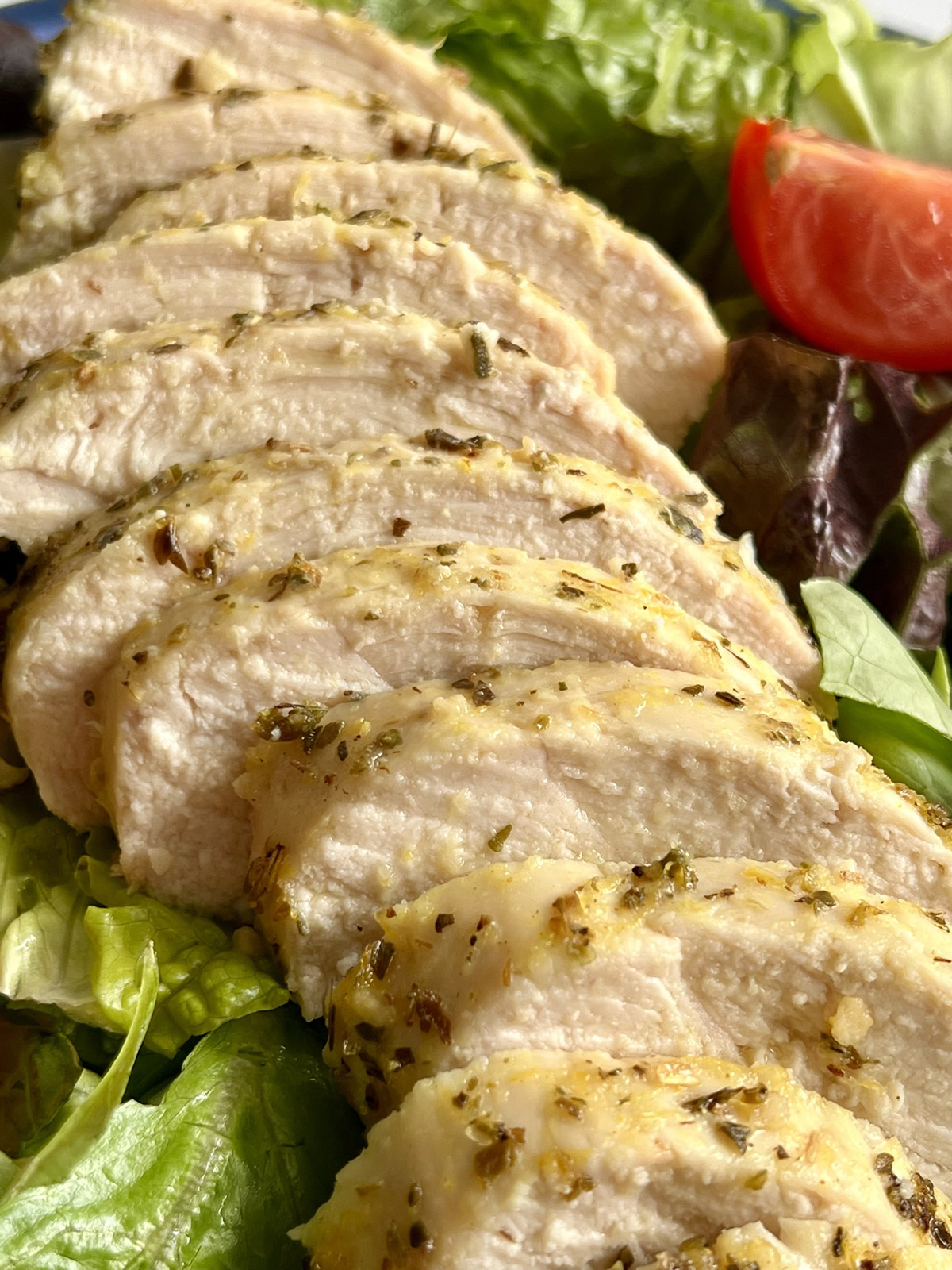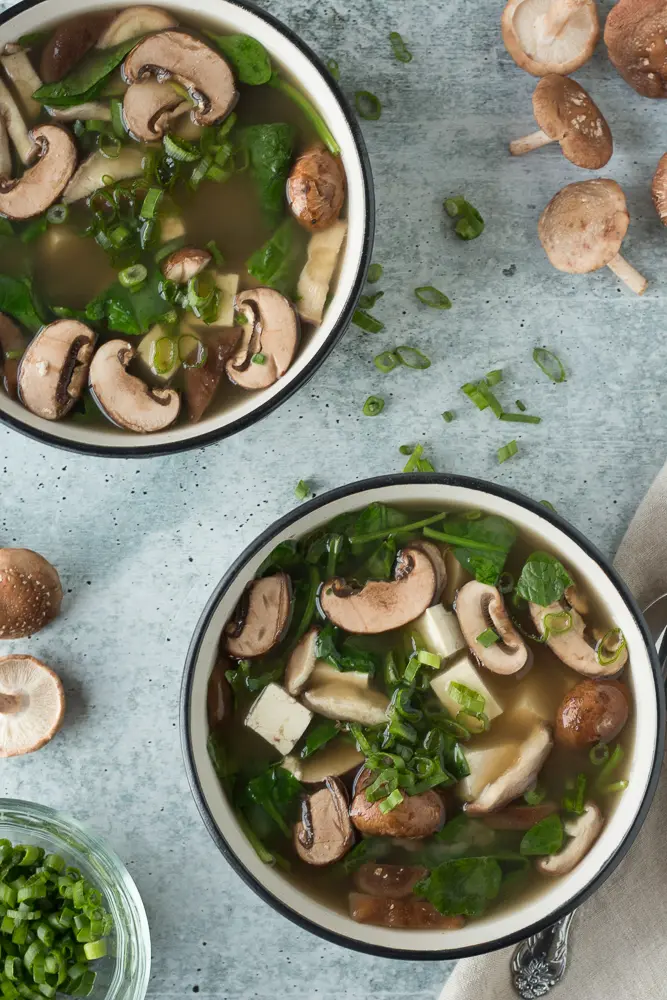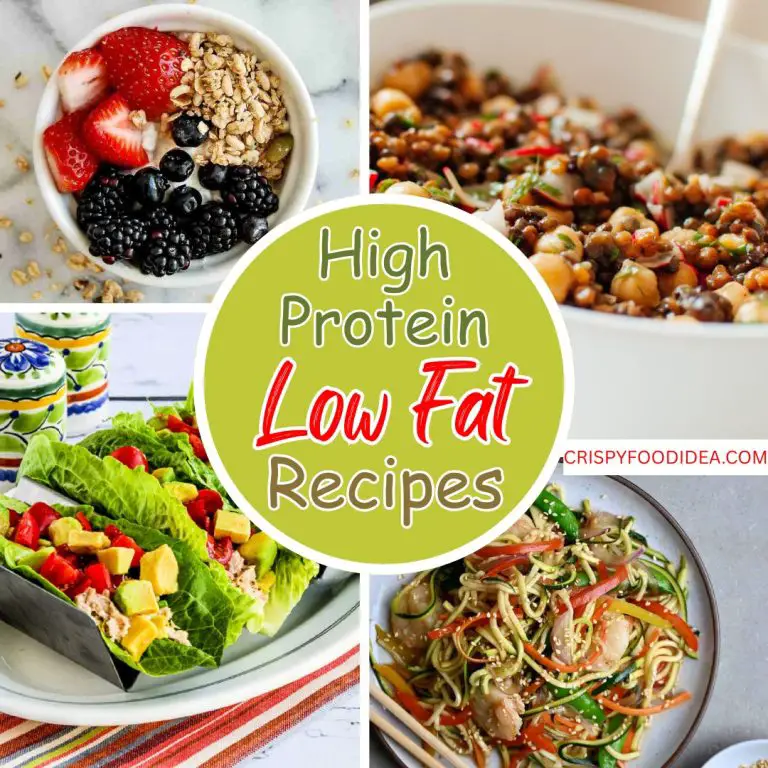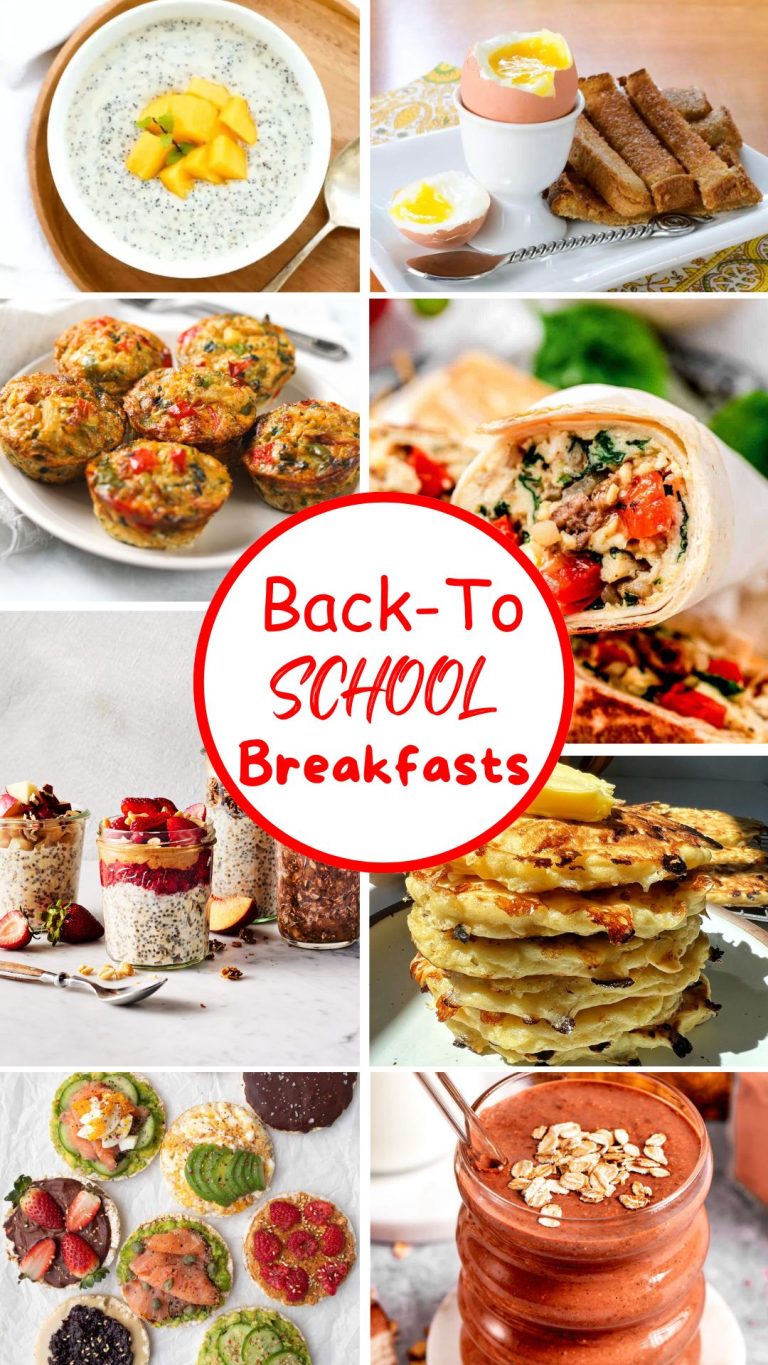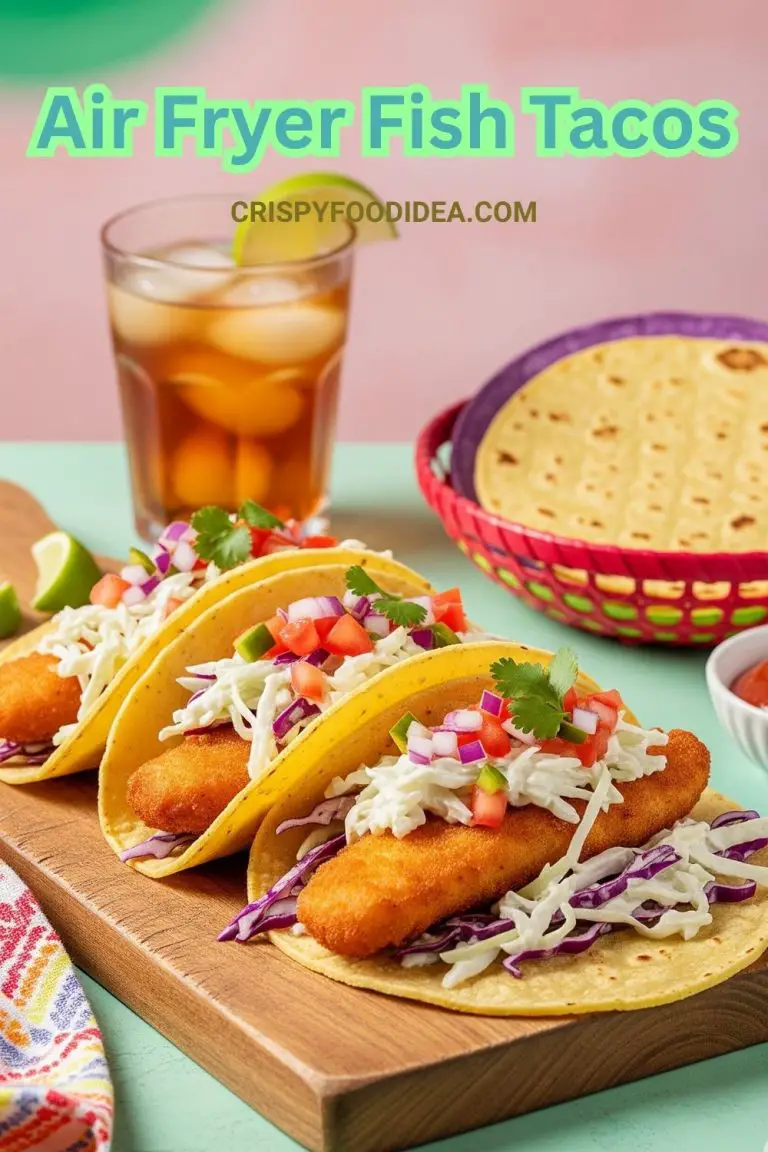Beyond the Salt Shaker: 10 Flavor Bombs to Transform Your Low-Sodium Cooking
If you’ve ever thought that low-sodium cooking means bland, tasteless meals, think again. Reducing salt doesn’t mean sacrificing flavor — it means discovering new and exciting ways to enhance your dishes with natural ingredients that are bursting with taste. For heart health, managing high blood pressure, or simply trying to eat cleaner, this guide will help you explore the best salt-free flavoring techniques that even top chefs use.
Here are 10 powerful salt substitutes—what we like to call “flavor bombs”—that will revolutionize the way your food tastes. From fresh herbs and citrus peels to bold spices and umami-rich ingredients, these flavor enhancers do more than just add a pinch of salt. They’re perfect for those following a low-sodium diet, creating heart-healthy recipes, or cutting back on processed foods.
Not only will these low-sodium flavor hacks make your meals more exciting, but they’ll also help you create balanced, healthy, and crave-worthy dishes that your family will love. Say goodbye to bland meals and hello to flavor-packed cooking — all without the excess sodium. Let’s explore the top 10 salt-free flavor bombs to take your healthy recipes to the next level!
Related: Low-Sodium Dinners
🚫 The Health Risks of Too Much Salt
While salt can enhance flavor, excessive sodium intake is a leading contributor to several serious health issues. Reducing salt in your diet isn’t just about flavor control—it’s a crucial step toward heart health and overall wellness. Understanding the risks associated with high-sodium diets can help you make smarter, healthier cooking choices.
🫀 Hypertension (High Blood Pressure)
Too much salt increases the volume of blood, putting added pressure on blood vessels. This is a major risk factor for strokes and heart attacks.
🧠 Stroke & Cardiovascular Disease
A high-sodium diet can damage arteries and increase the risk of strokes, heart failure, and other cardiovascular complications.
💧 Kidney Disease
The kidneys help regulate sodium levels. Overconsumption can strain kidney function and contribute to chronic kidney disease.
💡 How Much Salt is Too Much?
According to the Centers for Disease Control and Prevention (CDC), the recommended daily sodium intake is less than 2,300 milligrams—about 1 teaspoon. However, most people consume nearly double this amount through processed and packaged foods.
“Cutting back on sodium doesn’t mean cutting back on flavor. It means cutting your risk of chronic diseases.”
Suggested: Easy Chickpea Salad Recipe
🌿 Top 10 Flavor Bombs to Spice Up Your Low-Sodium Cooking
Citrus Zest & Juice
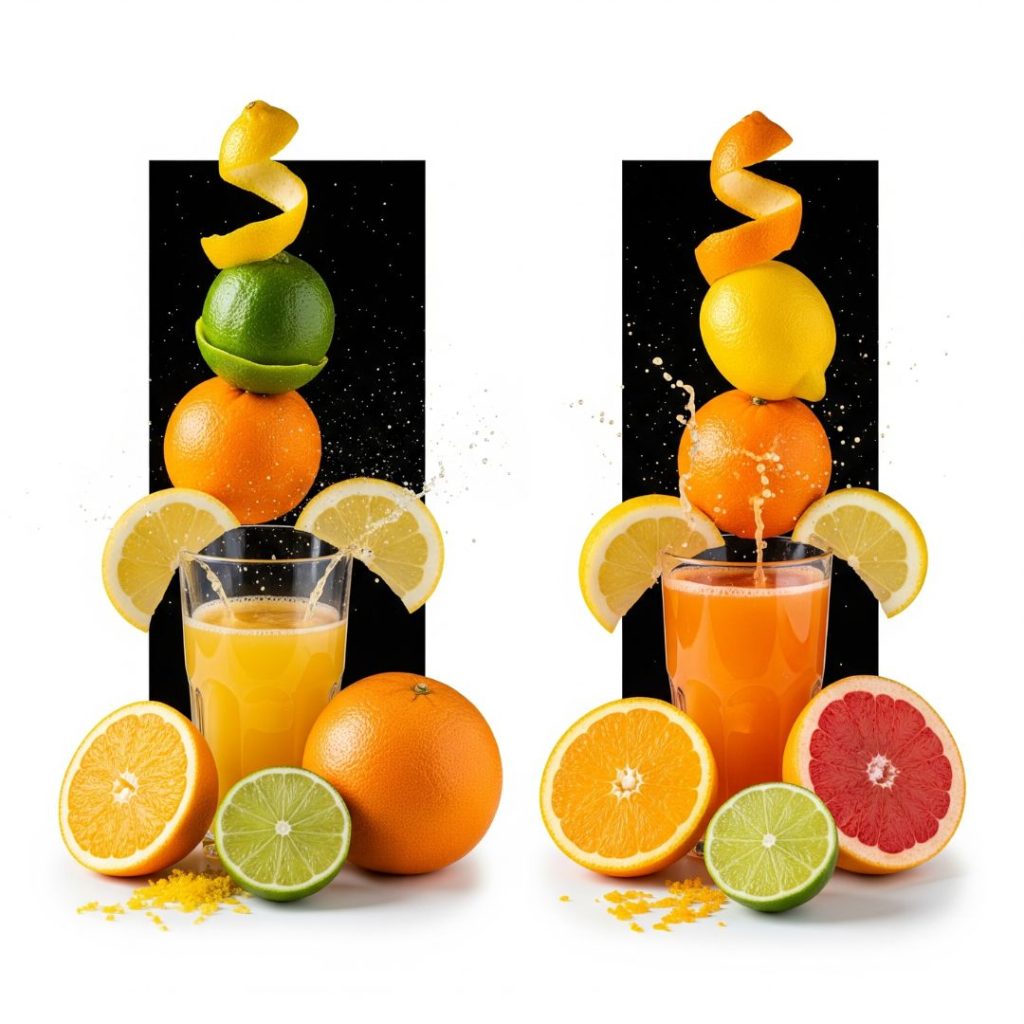
Citrus peels and juices are essential flavor enhancers in low-sodium cooking. Rich in natural acids and aromatic oils, lemons, limes, and oranges add brightness, tang, and freshness without a hint of salt. Use citrus peels for a powerful punch in marinades, salad dressings, soups, and stir-fried vegetables. This acidity mimics the effects of salt by stimulating the taste buds. Freshly squeezed lemon juice also helps cut fat and enhance savory flavors. For heart-healthy, sodium-free recipes, citrus is an indispensable kitchen staple. Add the peels at the end of cooking to maintain the intensity of the flavor.
Use with: Fish, roasted veggies, rice bowls, dressings.
Learn more about citrus zesting techniques →
Suggested: Easy Tilapia Recipes
Fresh Herbs (Basil, Cilantro, Mint)

Fresh herbs like basil, cilantro, mint, dill, and parsley add vibrant flavor, color, and aroma to low-sodium dishes. They’re a top choice for salt-free seasonings, adding freshness and complexity to dishes. Add them to grain bowls, sauces, salads, and soups to instantly brighten up your meals. Herbs are high in antioxidants and phytochemicals that promote heart health. Delicate herbs like cilantro and basil should be added toward the end of cooking, while stronger herbs like rosemary and thyme can withstand the heat. They provide depth and intensity, making salt-free dishes delicious.
Use with: Pasta, chicken, lentils, eggs, soups.
Suggested: Lemon Pepper Chicken Breasts
Spices That Pop (Smoked Paprika, Cumin, Turmeric)
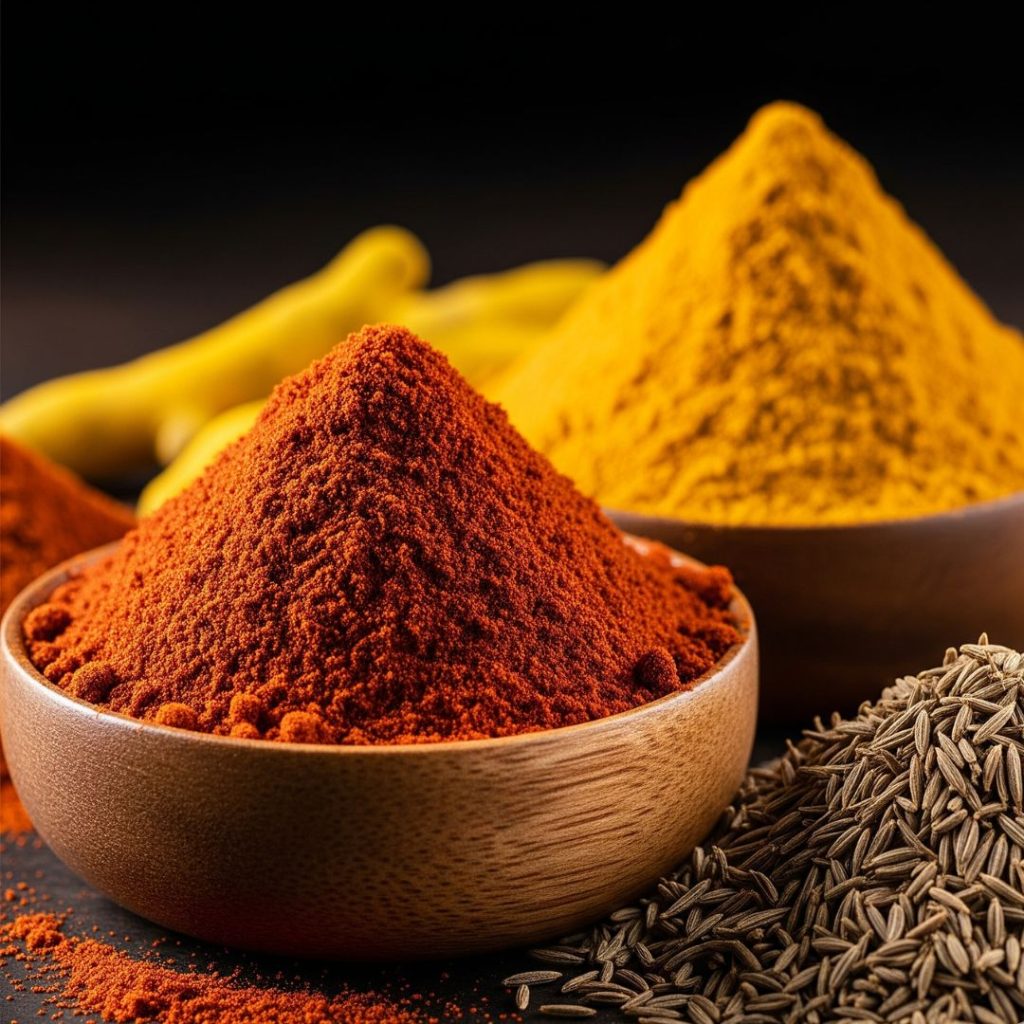
Bold spices like smoked paprika, turmeric, cumin, and coriander are your best allies in creating unforgettable low-sodium meals. These salt-free spices add warmth, complexity, and even color. Roasting spices briefly in a dry pan or oil activates their essential oils, intensifying their aroma and flavor. Add them to stir-fried vegetables, meat rubs, bean dishes, or curries. Spices also provide anti-inflammatory benefits and boost metabolism. When cutting back on salt, use spices strategically to create rich, balanced layers of flavor.
Tip: Toast cumin or turmeric briefly in oil before adding other ingredients for a burst of flavor.
Use with: Soups, roasted veggies, beans, and chicken rubs.
Unlock the power of toasted spices →
Suggested: Delicious Lobster Recipes
Aromatic Bases (Garlic, Onion, Shallots, Ginger)
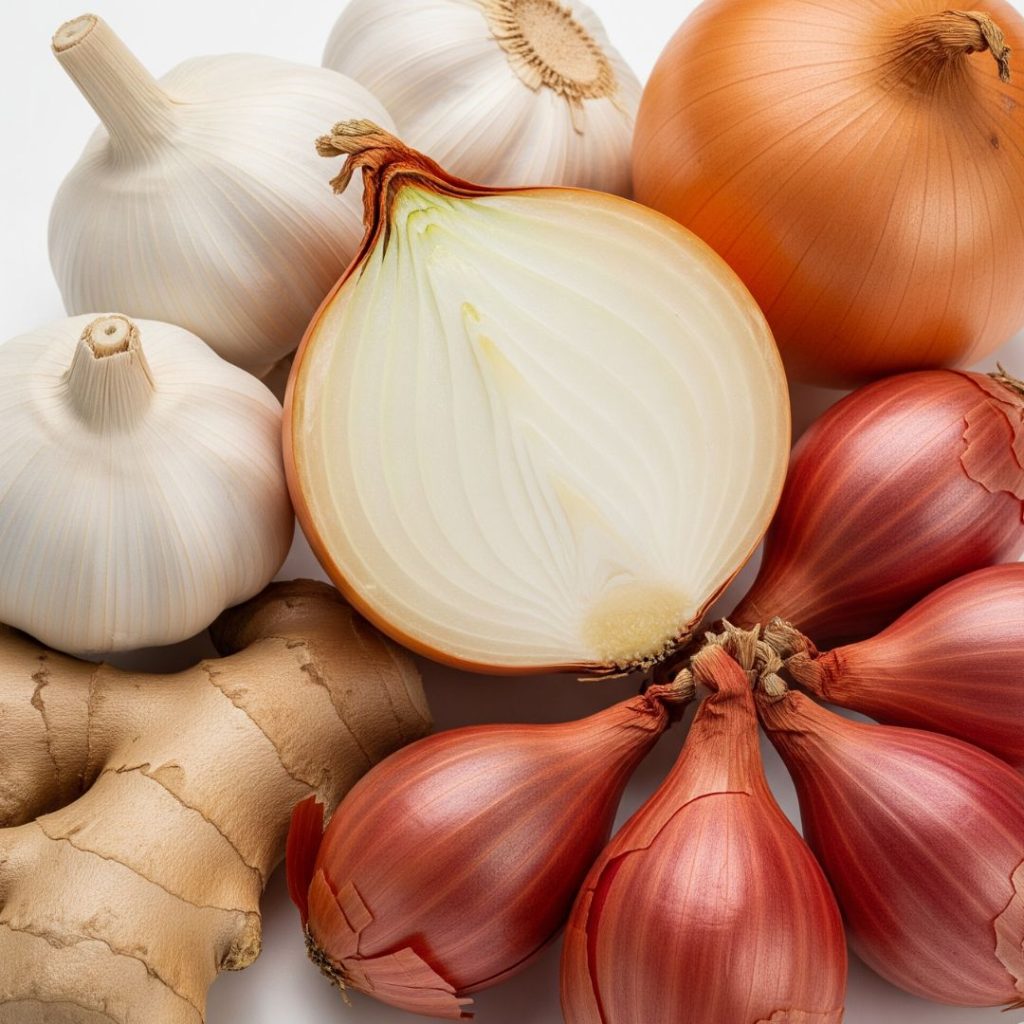
Aromatic vegetables like garlic, onion, shallots, and ginger make a delicious foundation for countless dishes. They create a savory, umami-rich base that enhances every bite without the sodium. When roasted, they release sugars that caramelize into a deep, sweet-savory flavor. Add them to soups, sauces, curries, or stir-fries for maximum impact. Garlic and onions also support the immune system and reduce inflammation. Roasting or slow-cooking them enhances their sweetness and complexity. Use aromatics early in cooking to naturally layer flavors and offset the lack of salt.
Use with: Stir-fries, soups, sauces, rice, marinades.
Umami Boosters (Mushrooms, Nutritional Yeast, Tomato Paste)
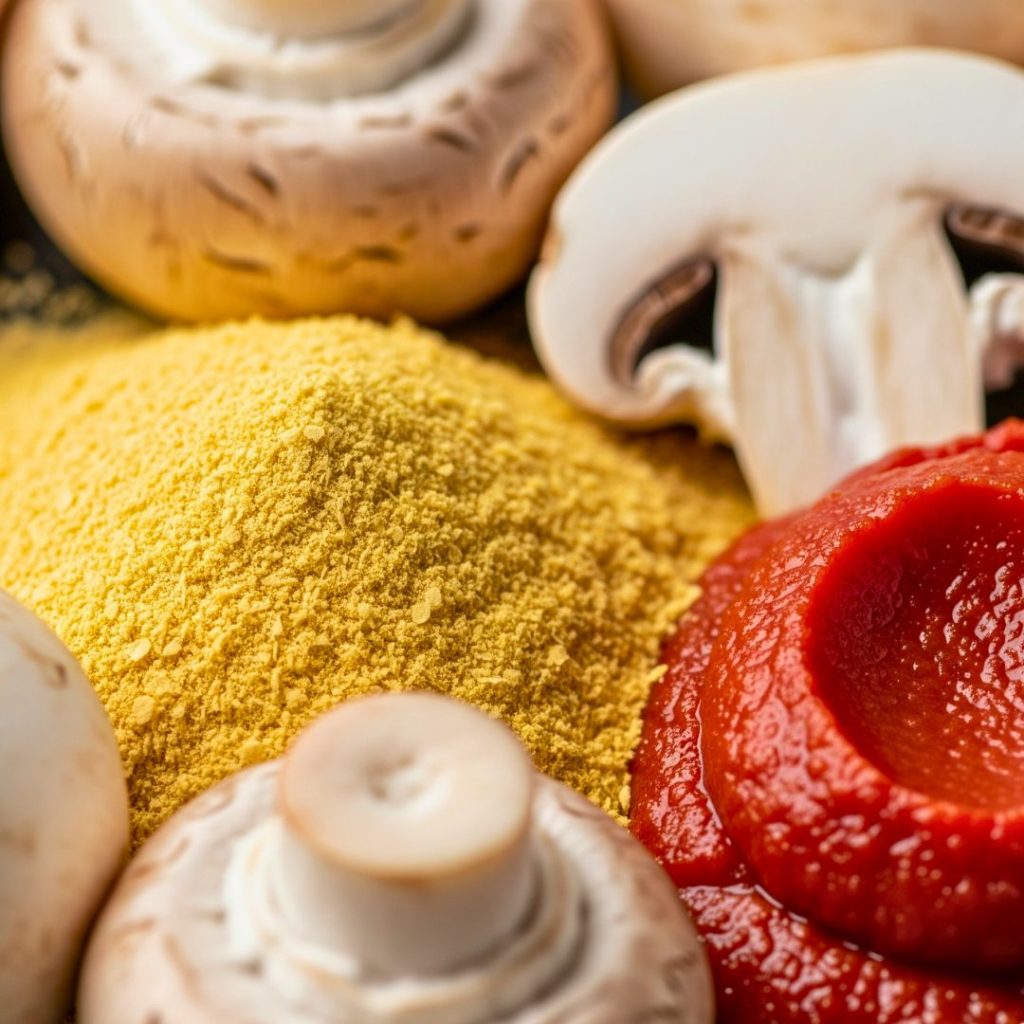
Umami is the secret weapon of low-sodium cooking. Mushrooms, tomato paste, nutritional yeast, and miso (the low-sodium version) add a meaty, savory flavor like salt. Saute mushrooms for earthy depth, or mix tomato paste into soups and stews for intensity. Nutritional yeast has a cheesy, nutty flavor that’s perfect for vegetarian dishes or popcorn. These ingredients add complexity to grain bowls, sauces, and casseroles without adding extra sodium. They also support gut health and immunity. Umami-rich foods are a must-have in any salt-free kitchen.
Use with: Pasta, soups, casseroles, and grain bowls.
Salt-Free Spice Blends
Salt-free spice blends are an easy and effective way to add dynamic flavor without the sodium. Homemade or store-bought options like taco seasoning, curry powder, or za’atar provide balanced, multi-layered flavor in seconds. You can sprinkle them on grilled vegetables, meats, tofu, and even popcorn. Making your own blend gives you complete control over the ingredients and sodium content. Many commercial blends now offer salt-free versions, including herbs, dried garlic, paprika, and citrus peel. Store your blend in an airtight jar for up to six months.
Try this.
Infused Vinegar & Balsamic Reductions
Acidic ingredients like vinegar and balsamic reduction bring brightness, balance, and contrast to low-sodium recipes. Vinegar mixed with garlic, peppers, herbs, or citrus adds depth to dressings, vegetables, and marinades. A balsamic glaze made with reduction vinegar creates a sweet, sour syrup perfect for salads, grilled vegetables, or even fruit. These acids mimic the ability of salt to enhance and complement flavor. Use sparingly for maximum effect. Acidic ingredients can elevate even the simplest dishes into something special.
Balsamic Glaze Recipe.
Low-Sodium Fermented Foods
Fermented foods like yogurt, kimchi, sauerkraut (low-sodium), and miso provide tang, umami, and gut-friendly probiotics to your meals. While traditional fermentation often contains salt, low-sodium versions or homemade recipes allow you to safely enjoy these powerful flavors. Add kimchi to a grain bowl, stir sauerkraut into a salad, or mix yogurt into a dressing. These ingredients add bold flavor and complexity while aiding digestion. For those watching their sodium intake, fermented flavor bombs provide a satisfying, healthy option that doesn’t rely on salt.
Low-Sodium Fermentation.
Toasted Nuts & Seeds
Toasted nuts and seeds add crunch, richness, and depth of flavor to low-sodium meals. Walnuts, almonds, sesame seeds, sunflower seeds, and pumpkin seeds release their oils and aromas when lightly toasted in a dry pan. They provide protein, fiber, and healthy fats, as well as texture and earthy flavor. Sprinkle them on salads, soups, rice, or grain bowls to make meals more satisfying. Toasted seeds also pair beautifully with citrus or spice blends. With zero sodium and plenty of flavor, they’re perfect for a hearty meal.
Raw vs Roasted.
Heat & Spice (Chilies, Black Pepper, Horseradish, Mustard)

Chili, mustard, black pepper, mustard, and hot sauce (low-sodium versions) add heat to your palate and stimulate the palate, creating a sense of intensity of flavor without the need for salt. These spicy ingredients light up the taste buds and enhance the flavor of any dish. Use crushed red pepper on pasta, mustard in dressings, or mustard in marinades. Hot sauces like Tabasco (low-sodium) provide a sour, fiery flavor. Spicy foods also boost metabolism and satisfy hunger. A little heat goes a long way when cutting back on salt.
Read this.
🔥 How to Combine Flavor Bombs Like a Pro
Knowing low-sodium cooking means more than just removing salt—it’s about balancing bold, dynamic flavors. By combining multiple salt-free flavor enhancers, you can create restaurant-quality meals without relying on sodium. Below, you’ll find powerful, professional-level pairings of acids, herbs, spices, umami, and textures that make your dishes come alive.
🌿 Mediterranean Magic
- Base: Garlic + Onion (sautéed)
- Herb: Fresh Basil + Oregano
- Acid: Lemon Juice
- Texture: Toasted Pine Nuts
Perfect for: Grilled chicken, quinoa bowls, roasted vegetables
🔥 Latin Fiesta
- Base: Smoked Paprika + Cumin
- Herb: Fresh Cilantro
- Acid: Lime Juice
- Umami: Tomato Paste
Perfect for: Tacos, rice bowls, grilled tofu
🍄 Umami Boost
- Base: Sautéed Mushrooms + Shallots
- Umami: Nutritional Yeast
- Acid: Balsamic Vinegar
- Texture: Crushed Walnuts
Perfect for: Pastas, risottos, grain salads
💡 Tips for Building Salt-Free Flavor Profiles
- Layering is key: Start with aromatics, then build with herbs, acid, and spice.
- Balance taste elements: Sweet, sour, umami, heat, and texture for depth.
- Use acid as a finisher: A splash of vinegar or citrus at the end brightens the dish.
- Don’t skip texture: Crunch from nuts, seeds, or crispy elements adds excitement without salt.
- Taste often: Your palate will adjust over time to appreciate more subtle, layered flavor profiles.
My Favorite 3 Low-Sodium Recipes Using These Flavor Bombs
Explore these delicious low-sodium recipes that pack a punch of flavor—no salt needed! Each recipe uses at least 2–3 of our signature salt-free flavor bombs to ensure your meals stay heart-healthy and crave-worthy.
Practical Tips to Go Low Sodium Without Missing Flavor
Embracing low-sodium cooking doesn’t mean sacrificing taste. In fact, with a few clever strategies, you can create salt-free dishes that are bursting with flavor, aroma, and texture. Use these expert-approved tips to build bold, balanced meals that are good for your heart—and your taste buds.
1. Read Labels Religiously
Always check the sodium content per serving. Opt for products labeled “low-sodium”, “no salt added”, or “sodium-free”.
2. Build Flavor with Aromatics
Use garlic, onions, shallots, and ginger to create a flavorful base. Sautéing aromatics brings out their natural sweetness and depth.
3. Add Layers of Acid
Brighten dishes with citrus juice, vinegars, or a splash of wine. Acid helps mimic the sharpness of salt and enhances other flavors.
4. Use Salt-Free Seasoning Blends
Keep salt-free blends like garlic & herb, lemon pepper, or taco spice on hand. DIY versions give you full control over flavor.
5. Roast, Grill, and Toast
High-heat techniques like grilling, broiling, or roasting enhance umami, add complexity, and make veggies and proteins irresistible.
6. Embrace Natural Umami
Incorporate low-sodium sources of umami flavor like mushrooms, tomato paste, nutritional yeast, and miso (watch labels!).
7. Gradually Cut Back on Salt
Your taste buds will adjust! Reduce salt slowly and use spices and acids to fill the gap as your palate adapts.
8. Finish with Fresh Herbs
Fresh herbs like parsley, basil, mint, and cilantro add a burst of aroma and brightness at the end of cooking. Use generously!
Frequently Asked Questions
Low-Sodium Cooking & Flavor Enhancers
What are the best low-sodium seasonings for everyday cooking?
The best low-sodium seasonings include fresh herbs like basil, thyme, cilantro, and spices such as cumin, paprika, turmeric, and coriander. You can also use salt-free seasoning blends like Mrs. Dash or create your own homemade mixes using garlic powder, onion powder, oregano, and lemon zest. These natural seasonings enhance flavor without adding sodium.
How can I add flavor to my meals without using salt?
Boost flavor in salt-free cooking by combining acidic ingredients like lemon juice or vinegar, umami-rich foods such as mushrooms or nutritional yeast, and aromatic bases like garlic and onions. Don’t forget to use spices and herbs generously and layer flavors by sautéing or roasting them to enhance depth.
Are herbs better fresh or dried in low-sodium recipes?
Both fresh and dried herbs work well in low-sodium cooking. Fresh herbs like parsley, mint, or dill are ideal for garnishing or adding brightness at the end. Dried herbs like oregano or thyme are perfect for long-cooking dishes. Use them together to create depth and complexity in flavor.
Can I use vinegar or citrus instead of salt?
Vinegar and citrus juice (like lemon or lime) are fantastic salt substitutes that add tanginess and enhance other flavors. Acidity balances and brightens dishes, making them taste more vibrant without added sodium. Try apple cider vinegar, balsamic vinegar, or fresh lemon juice as go-to low-sodium flavor boosters.
What is a good salt-free seasoning blend for chicken or veggies?
A simple and delicious salt-free seasoning for chicken or vegetables includes garlic powder, onion powder, smoked paprika, black pepper, dried thyme, and a squeeze of lemon juice. You can also try McCormick’s salt-free blends or Mrs. Dash Original Blend for ready-made options.
If you like this article about Flavor Bombs to Transform Your Low-Sodium Cooking, please share this with your friends on Facebook and Pinterest. Also, subscribe to my blog to get all the latest content first on your mobile.


